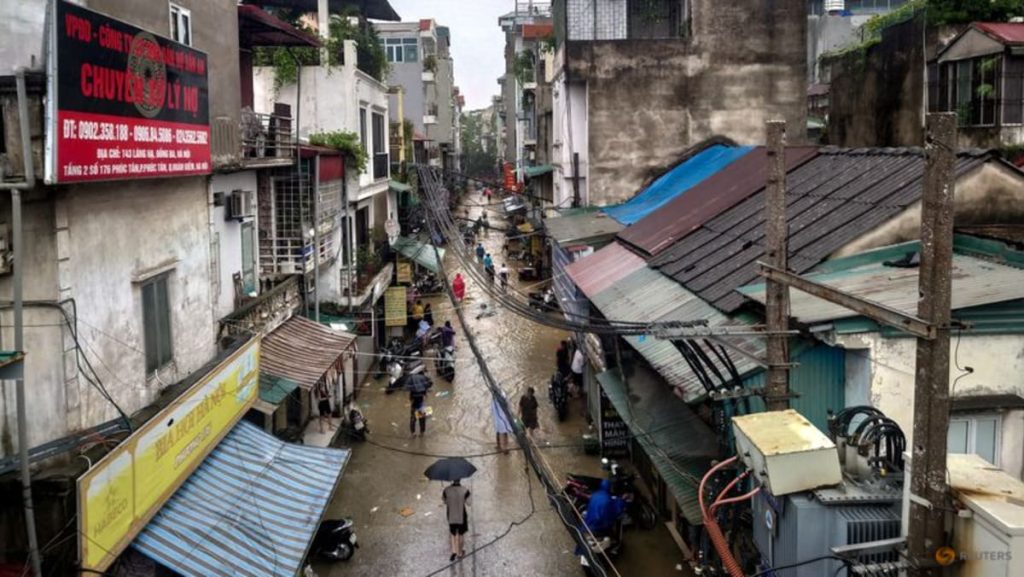In Thai Nguyen province, Vietnam, Hoang Van Ty expressed disbelief that his house was submerged under deep floodwaters, causing damage to his clothes and furniture. Fortunately, he had closed the doors, preventing items from being washed away. Thai Nguyen is also home to Samsung Electronics’ largest smartphone manufacturing plant, which has been impacted by the floods. Despite receding flood waters, the province is now focused on clean-up efforts in the affected areas.
The disaster management agency reported that over 200,000 hectares of rice and cash crop fields have been inundated by the landslides and floods in Thai Nguyen province. Additionally, the typhoon has disrupted power supplies and damaged factories in Haiphong and Quang Ninh provinces, causing production to halt. International aid has been pledged by countries like Australia, Japan, and the United States to assist Vietnam in the aftermath of the natural disaster.
Beyond Vietnam, the aftermath of the typhoon has caused flooding in Laos, Thailand, and Myanmar. Deadly landslides and river flooding have been triggered in these countries. The Mekong River Commission has issued a flood warning for the historic Laotian city of Luang Prabang, a UNESCO world heritage site, as the Mekong River is expected to reach flood levels there. In Thailand, the death toll has risen to eight, with additional deaths reported from a landslide in Chiang Mai province.
In Mae Sai district on the border with Myanmar, Thailand is experiencing its worst floods in 80 years, according to a senior interior ministry official. Further assistance and relief efforts are needed in these countries to address the damage and loss caused by the extensive flooding and landslides. The international community has shown solidarity by sending aid and resources to support the affected regions in recovering from the devastation of the typhoon.
The impact of the floods goes beyond property damage, affecting the livelihoods and agricultural sectors in the affected areas. With rice and cash crop fields inundated, farmers face significant losses due to crop damage and the disruption of their farming activities. It will be crucial for these communities to receive support in rebuilding their livelihoods and recovering from the economic impact of the natural disaster.
As the affected countries work on recovery efforts and rebuilding infrastructure, the international community’s support and assistance will play a vital role in facilitating the response to the widespread flooding and landslides caused by the typhoon. Collaborative efforts between governments, humanitarian organizations, and local communities will be essential in addressing the immediate needs of those affected and providing long-term solutions for rebuilding and resilience against future natural disasters.


